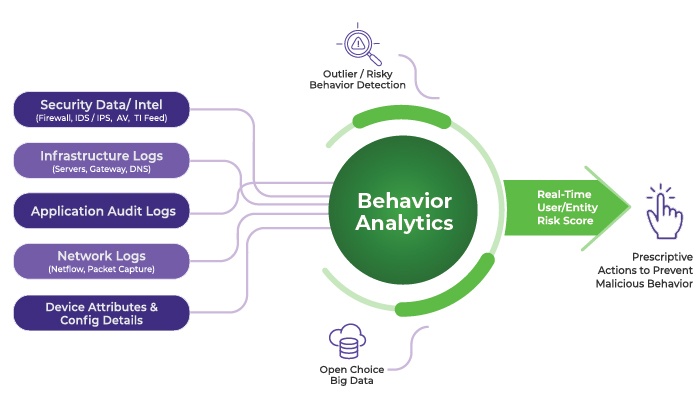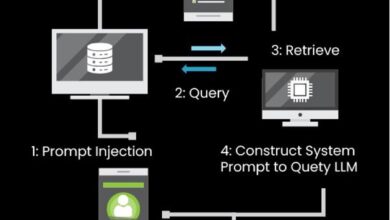
The entire cybersecurity space since long depends on the conventional modes of malware detection and prevention. But, such methods have started showing their age, thereby proving less effective against any sophisticated and growing cyber threats like ransomware, trojans, adware, backdoor attacks, and other malicious software.
As reported by MarketsandMarkets, the global market size for AI in cybersecurity is growing exponentially from $8.8 billion in 2020 to $38.2 billion by 2026 at the forecasted period of 23% CAGR.
As a robust solution, implementing AI forms the limelight that promises to revolutionize the entire outlook of malware detection and third or fourth party risk management solutions.

Importance of Artificial Intelligence Against Cyber Threats
Whenever cyber activities call for rapid response in cybersecurity, conventional methods of malware detection like sandboxing, signatures, and heuristics have reached their limitations.
The approaches mainly used in the past have proven the most resource-intensive and need help to keep up with the evolving pace of cyber security threats. The eventual boom across Threat Intelligent Platforms records the seamless flow of new malware strains in real-time.
With the ever-evolving number of malware variants reported regularly, a classy and responsive detection solution becomes essential. AI or artificial intelligence takes the main lead in this area.
Areas Where AI in Cybersecurity Works
Data Analytics
One of the primary contributors to AI across the security space of digital terminals and devices is included in advanced data analytics. AI helps with the in-depth assessment of the security data, enabling anomalies and trends to get identified as they escape from manual detections. The ability allows the companies to make the best decisions on the basis of real-time, accurate information that boosts their ability to respond in a better way to threats and managed third party risk across the changing cybersecurity space.
Proactive Prevention
Proactive prevention is yet another area where artificial intelligence works effectively. AI technology makes it possible to anticipate threats by acknowledging risks before any exploitation. The predictive abilities enable businesses to implement preventative measures to boost system and data protection before threats lead to damages. Proactive approaches will mark a notable leap towards securing digital frameworks.
Behavioral Analysis
It potentially uses AI for the prevention of threats at its initial stage. It enables constant monitoring by establishing a general behavior model that is determined through historical activities. It scans through the network for elements deviating out of the standards at any moment. The evaluation considers various variables that include the location and time of the user connection tries and the kind of devices that get used. AI can proactively detect different anomalies and instantly mitigate them. The approaches are accessible to businesses of all sizes, including solutions offered by the network security programs.

Indicators of Attack (IOA)
Although AI-based cybersecurity recently aims to use indicators of compromise or IOC to notify companies whenever breaches are taking place, AI can also offer IOAs or indicators of attack. Generally, IOAs can identify the intent of attackers by checking out their objectives.
The indicators of the attacks use a fusion of human skills along with cloud-based machine learning to help generate complete data about the behaviors of the attackers. The IOAs are used for building an accurate image of malicious behavior and distinctive intentions.
Benefits of AI-powered Malware Detection
The different benefits of using malware tools incorporating AI and machine learning are notable, and they include the following:
Enhanced Accuracy
Both AI and machine learning algorithms analyze the massive range of data to identify the patterns that are challenging and impossible for normal human detection. It results in greater accuracy to detect and prevent any malware attacks.
Real-time Threat Detection
AI-powered malware detection tools can effectively detect and respond to threats in real-time. This is vital since malware attacks take place rapidly, leading to notable damages whenever they are not addressed instantly.
Automated Response
The highly advanced malware tools with AI can respond to the threats automatically like blocking the traffic out of the malicious IP addresses and preventing the malware spread.
Reduced False Positives
AI-based algorithms reduce the frequency of false positives. These alerts are mainly triggered through legitimate activities; however, they incorrectly identify threats. This is essential since false positives lead to unrequited disruptions, diverting every resource out of the intricate issues.
Continuous Learning
Both AI and machine learning algorithms can constantly learn out of the new data while adjusting the algorithms. It indicates that they are adapting to the latest threats, evolving effectively with time.

How AI Improves Malware Detection
AI-based machine learning can boost malware detection procedures by evaluating massive amounts of data and identifying patterns that are tough for traditional or human antivirus software to detect. Such algorithms identify the connection between files and their attributes, such as the type of file, size, and behavior, while using the data to detect and classify malware.
Three ways in which AI can help improve the process of malware detection include:
- Behavioral analysis: The AI-based algorithms analyze the files’ behavior while identifying patterns consistent with malware’s behavior, such as accessing key data, modifying system files, or communicating with the command-and-control server.
- Signature-based and anomaly detection: Machine learning AI analyses the signatures that are considered malware while using this data for identifying identical malware. They would identify the abnormal behavior like the file attempting to access the resources that it is not using generally. The approach remains beneficial to detect the latest variants of the existing malware, brand new types of malware without the known signature, or zero-day attacks.
- Automated classification: The AI-powered algorithms automatically classify the files as malicious and benign based on their behavior and features. This approach will help reduce the workload of security professionals while speeding up the detection process.
Zero Trust Model
Human-based challenges remain a vital element in cybersecurity with the help of artificial intelligence. Although AI forms an essential asset, it is never self-sufficient. Security analysts are important in interpreting the outcomes generated through AI, making contextual, informed decisions, and redefining security policies that rely on company specifics. Human skills are essential to ensure better protection against any digital threats across the AI-based space.
The highly effective solution for mitigating such challenges involves adapting to the zero-trust model. This approach involves not relying on programs, controlling activities, and blocking down unknown elements. AI is a potential ally for this approach as it can hardly operate in isolation or independently.
AI should be implemented across a wider policy framework, including the active involvement of security analysts and the continuous monitoring that maintains a greater level of protection. The combined technology and human surveillance are stronger in terms of addressing the intricate challenges across the modern cybersecurity space.
Conclusion
Highly advanced malware detection is compulsory for protection against the ever-evolving threat space in terms of cyber attacks. While malware is becoming an intricate and complex process, traditional security measures are never limited in terms of safeguarding it.
Highly advanced malware detection, with effective help from AI-powered tools, follows a proactive approach to help businesses stay a step ahead of cyber threats while safeguarding their systems from attacks.
Balla




